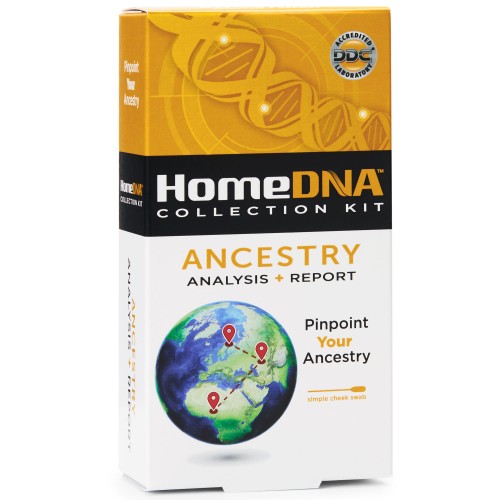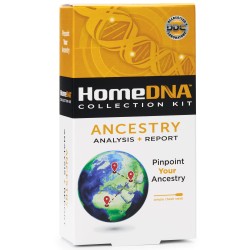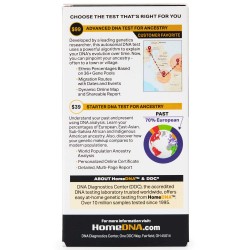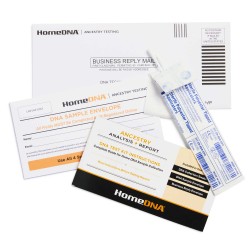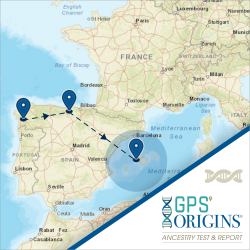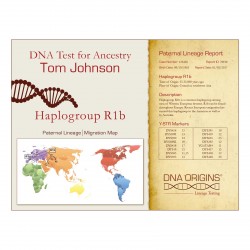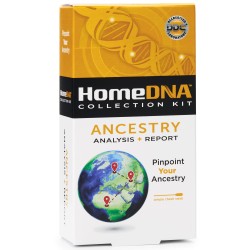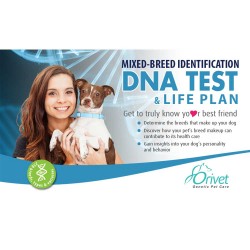The Science
HomeDNA™ Advanced Ancestry Test is a revolutionary DNA analysis that enables you to trace your family history based on DNA mixture events that began over 1,000 years ago. It provides maternal and paternal migration routes with precision targeting—sometimes down to the village or town. Current DNA tests used for genealogy locate where fragments of your DNA formed within countries or continents. Typically you find that some of your ancestors come from Western Europe, Africa, or South Asia, and you are given broad estimates of ethnicity. This type of DNA test generally cannot identify a radius of your origins to particular locations with longitude and latitude. This test overcomes the limitations of older DNA tests by using a new ancestral tracking technique that leverages unique markers in your DNA to pinpoint specific places where your DNA was formed. These markers were carefully selected to inform us of the particular routes your ancestors took.
The Science Behind the Test
This DNA test is based on a new way of viewing human populations that considers everyone as mixed from different gene pools. This model is fundamentally different from existing ancestry testing which suggests that humans branched from a small number of populations that changed over time. Instead, this test relies upon the genetic uniqueness created by mixing 41 global gene pools in different proportions—more than twice the number being used by other methods. As such, it captures ancient events, like the migration of Indo-Iranian people into Europe around 2500 BC. The gene pools describe the geographical origins of your DNA molecule as passed along the generational lines.
The test utilizes autosomal DNA inherited from chromosomes 1-22, which are more sensitive to the genetic signature of your most recent common ancestors compared to the Y and mitochondria chromosomes. To trace the origin of your DNA, the test splits your gene pool's unique signature into its two primary components, roughly corresponding to paternal and maternal, but not always. For example, people whose two parents are of English descent may find that this test traced their ancestries to Italy and Scandinavia, probably because the Romans and Vikings, who conquered England, contributed most to their ancestry. After determining the two head points, the test calculates the migration routes that your ancestors’ DNA took, using large circles to represent uncertainty and smaller circles for higher confidence in the geographical region. Circles represent the places where your ancestors' DNA stayed and mixed with the local inhabitants of these lands.
The migration routes are not a literal travel itinerary of your DNA. If there was no gene exchange with the local population at a particular site, the test will not report this site, although your ancestors may have traveled there. Moreover, in cases of big migrations of population A into population B, if population A continues marrying within the group, the test would trace its geographical origins to the original A site, although population A has been physically living with population B for a very long time. Finally, this DNA test for ancestry uses specific mutations in your DNA to date the most recent migration events. It can then offer an explanation as to what may have incentivized your ancestors to move from point A to point B at this particular time period.
The Test Creator
The algorithm used for this test was developed at the University of Sheffield in 2016, led by the research team of Dr. Eran Elhaik. Dr. Elhaik, a population geneticist, was one of the collaborators on an early version of the technology in 2012 called Geno 2.0 on behalf of the National Geographic Society. Most recently, the journal Nature Communications published a peer-reviewed paper describing the science behind the algorithm on April 29th, 2014. The accuracy of the test was demonstrated by identifying the DNA signature of ancient Ashkenazic Jews and their formation approximately 1,500-2,000 years ago.
See the Glossary of Ancestry Terms
